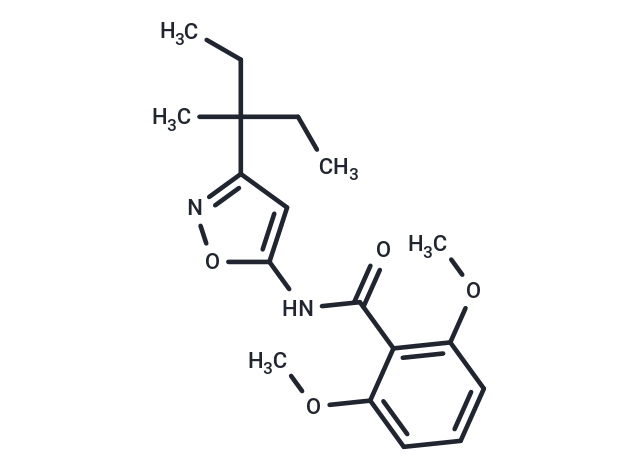Shopping Cart
- Remove All
 Your shopping cart is currently empty
Your shopping cart is currently empty

Isoxaben (EL 107) is a specific inhibitor of cell wall biosynthesis, often used as a herbicide, that inhibits the incorporation of radiolabeled glucose into acid-insoluble cell wall fractions.

| Pack Size | Price | Availability | Quantity |
|---|---|---|---|
| 1 mg | $186 | In Stock | |
| 5 mg | $410 | In Stock | |
| 10 mg | $597 | In Stock | |
| 25 mg | $973 | In Stock | |
| 50 mg | $1,290 | In Stock |
| Description | Isoxaben (EL 107) is a specific inhibitor of cell wall biosynthesis, often used as a herbicide, that inhibits the incorporation of radiolabeled glucose into acid-insoluble cell wall fractions. |
| Alias | NA 8318, Isoxaben; EL 107; NA 8318, EL 107 |
| Molecular Weight | 332.39 |
| Formula | C18H24N2O4 |
| Cas No. | 82558-50-7 |
| Smiles | CCC(C)(CC)c1cc(NC(=O)c2c(OC)cccc2OC)on1 |
| Relative Density. | 1.2149 g/cm3 (Estimated) |
| Storage | Powder: -20°C for 3 years | In solvent: -80°C for 1 year | Shipping with blue ice. |

Copyright © 2015-2025 TargetMol Chemicals Inc. All Rights Reserved.